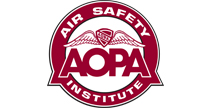Takeoff distraction dooms Citation
LAX07MA069
 Distractions are a part of everyday life. They pop up unexpectedly. Typically we stop what we’re doing, address them, and then resume whatever activity they interrupted. This approach works fairly well—unless we happen to be flying an aircraft at the time. A relatively minor in-flight distraction can quickly lead to disaster if the pilot forgets aviation’s first commandment: Fly the airplane.
Distractions are a part of everyday life. They pop up unexpectedly. Typically we stop what we’re doing, address them, and then resume whatever activity they interrupted. This approach works fairly well—unless we happen to be flying an aircraft at the time. A relatively minor in-flight distraction can quickly lead to disaster if the pilot forgets aviation’s first commandment: Fly the airplane.
On Jan. 12, 2007, a Cessna 525 CitationJet crashed shortly after takeoff from Van Nuys Airport in Van Nuys, Calif. The co-pilot had failed to lock the front left baggage door, which flew open during rotation and distracted the pilot—a 38,000-hour ATP—during the initial climb. The aircraft stalled and spun into the ground, exploding on impact. Both pilots were killed.
The local positioning flight was destined for Long Beach, Calif. Prior to departure, a ramp worker fueled the CitationJet and spoke with the co-pilot, who was loading several cases into the left nose baggage compartment. The worker later said he saw the co-pilot shut the baggage door, but not latch or lock it.
At 11:07 a.m., the aircraft was cleared for departure on Runway 34L. Shortly after liftoff, one of the pilots called the tower and requested a return to the airport for landing. The tower controller cleared the aircraft to land on any runway. Witnesses reported that the airplane was flying slowly, and that its wings began to rock. The CitationJet turned slightly to the left, then broke hard to the right and crashed, igniting a fireball.
Witnesses who saw the aircraft from midfield said that the left front baggage door was still closed during the airplane’s takeoff roll. Others located near the end of the 8,000-foot runway stated that the baggage door was open, standing straight up, when the aircraft was about 200 feet agl. When the door was later located in the wreckage, the key lock was found to be in the horizontal (unlocked) position.
Some witnesses thought they saw dark objects fall from the airplane and enter one of the engines. Nothing was found on the ground between the runway and the crash site. When NTSB investigators examined the engines, they found discolored fan blades near the center hub of the right engine and a page from a Jeppesen manual protruding from the fan stator. Nevertheless, the board determined that neither engine sustained foreign object damage that would have precluded normal operation.
The NTSB concluded that the accident resulted from the pilot’s failure to maintain adequate airspeed during the initial climb, leading to an inadvertent stall and spin. The co-pilot’s inadequate preflight and his failure to properly secure the front baggage door were cited as contributing factors that allowed the door to open in flight, likely distracting the pilot.
Distraction may have played a role twice in this accident. According to the ramp worker, the co-pilot was engaged in a conversation while he stowed baggage in the nose of the CitationJet. Not fully focused on the task at hand, the co-pilot easily could have overlooked the latching and locking of the compartment door. When we ready an airplane for flight, it’s important not to let our attention wander. Idle chatter with passengers and others can cause us to overlook little things during preflight—little things that can become major issues in the air.
Most pilots have, or will, encounter distractions in flight. Annunciators flash. Windows fly open. Doors become unlatched. The key is for the pilot not to become unhinged. Above all, maintain focus and control of the aircraft. Many minor distractions can be troubleshot in the air. Some require a return to the airport. Very few constitute true emergencies—unless we allow them to become one. The old mantra may sound rudimentary and even clichéd, but in the face of distraction it’s a lifesaver: Fly the airplane.